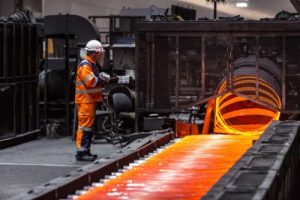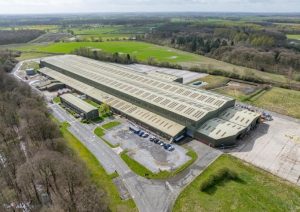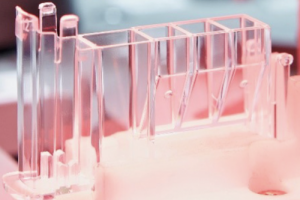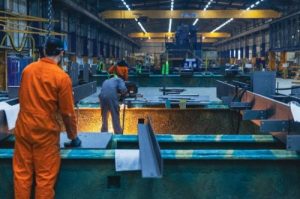Engineers help keep space industry at the cutting edge
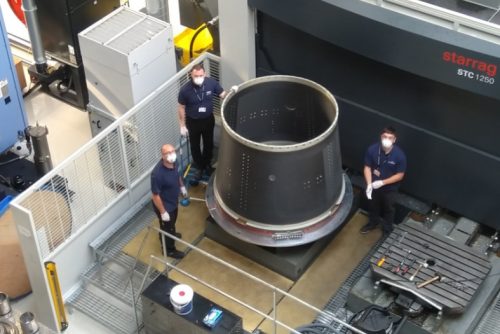
Engineers at the University of Sheffield AMRC were praised by Airbus Defence and Space bosses for the speed and quality of their work on critical satellite components.
Kevin Clynes, who heads Research and Process Technology Engineering for the Airbus division, said the operation on the base cone for its new satellite was done “during a very difficult time with speed, efficiency and accuracy” by engineers from the Composite Centre at the University of Sheffield Advanced Manufacturing Research Centre (AMRC).
He said: “Despite the restrictions and challenges of the Covid-19 lockdown, it was crucial to Airbus Defence and Space to continue with operations.
“This was not only about keeping our business going but also about keeping our customers, partners and suppliers operating as well.
“The AMRC showed great effort and commitment to keep UK industry going during this challenging time.”
Dr Kevin Kerrigan, who heads composite machining research at the AMRC, said: “It was an honour for the AMRC to be able to support the team at Airbus Defence and Space during these challenging times.”
The cone is a key component of the Eurostar Neo, a new high performance communication satellite developed by Airbus Defence and Space.
Due for launch in 2021, the cone forms the central structure and base of the service module of the satellite, which houses the propulsion tank.
It is made from aluminium honeycomb, which is sandwiched between an inner and outer skin made of carbon fibre reinforced polymer.
The AMRC team needed to machine 288 holes and three larger access panels, whilst achieving tolerances smaller than the diameter of a human hair.
Further work included machining flats on upper and lower rings that had been bonded to the cone.
John Halfpenny, technical lead at the AMRC Composite Centre, worked with machine tool operator Lewis Nicholson to carry out the complex job, operating under strict lockdown conditions and health and safety guidelines.
Halfpenny said: “We knew it was important because Airbus had been given permission from the Government to do the work during lockdown, as it is industry specific and critical to their work packages.
“The cone itself is quite large, 1.3m high. It is a typical sandwich structure with three layers – carbon fibre on the outer and inner surfaces, with aluminium honeycomb layer in the middle – and quite difficult to machine without damaging the super lightweight, high-value structure.
“The carbon fibre has a tendency to splinter and break away if machined incorrectly.
“Airbus had a zero defect feature requirement, which meant no splintering on entry and exit of all features. This is critical to the component, so the AMRC developed techniques to eliminate all delamination.
“Also, another requirement was the honeycomb structure had to have a clean burr-free cut.
“If machined with conventional tools and drills, it would be very easy to damage the thin sandwich structure so specialist tools were sourced, that were capable of producing a really fine, neat edge on the honeycomb.
“OSG, a tier one research partner, was the tool supplier on this project and they have worked with us to develop the process.”
Once complete, the cone was delivered to Airbus’ Stevenage site, where metal inserts were accurately bonded into the carbon holes machined by the AMRC to give precision fixing points for brackets and panel attachments.
The cone project is the culmination of two years of research and development carried out by the AMRC for Airbus Defence and Space, in which various-scaled cones were machined using a new process developed for Airbus Defence and Space as part of its manufacturing development programme.
Halfpenny said: “We knew that if this wasn’t machined on time it could have delayed the final assembly process. The satellite is due to launch in 2021 – slots for launches like this are booked years in advance, so we knew there were deadlines to meet.”


